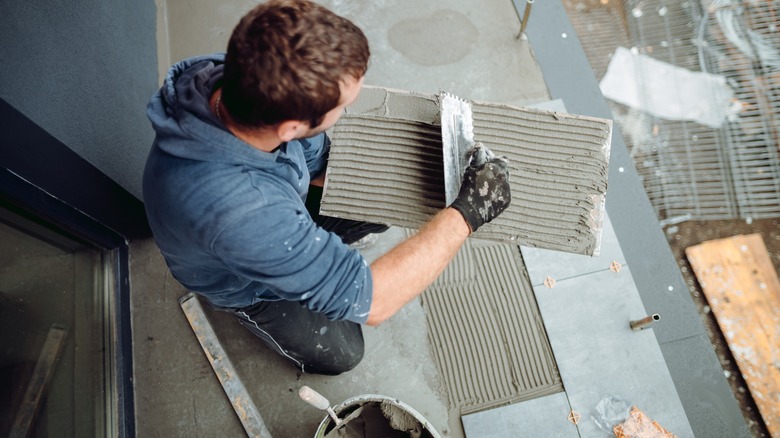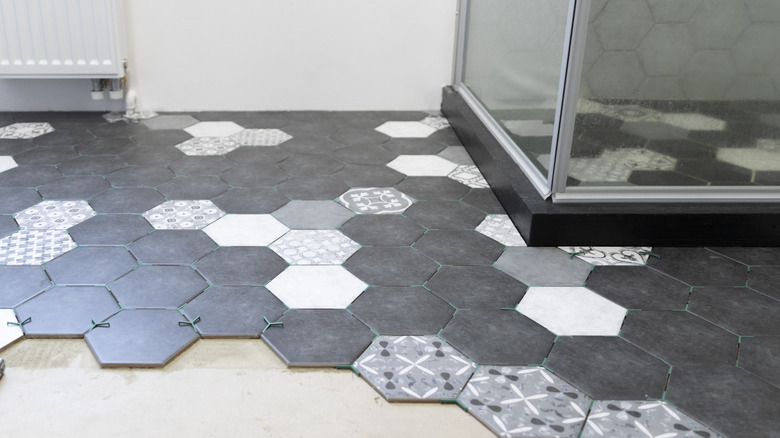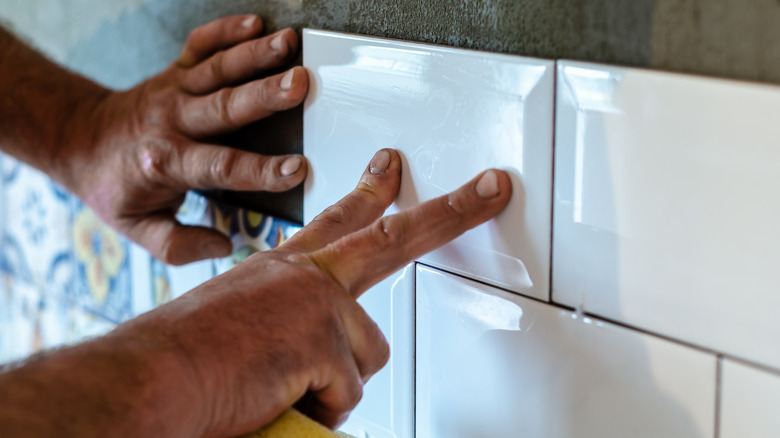Tile Mastic Vs. Thinset Mortar: Which Is Right For Your Next Tile Project?
Every tile project needs a good adhesive, and for DIY installs, the most popular choices are mastic or thinset mortar. As with any construction material, prices will vary, and you'll need to consult your budget. However, when you're choosing between the two, it may be best to look beyond the price tag. Mastic and thinset have their own distinct characteristics, and these attributes create advantages and disadvantages that can affect any home tile project.
Mastic is comparable to a glue. It's quite sticky and quick to set. That makes it great for vertical applications. Just be confident in where you're placing the tile — mastic's quick-setting nature means it's not exactly error friendly.
Thinset is more like a paste. Its two main ingredients are cement and sand. Naturally, this makes thinset stronger than mastic and better suited for large tiles, but it also leads to a slower set. The inclusion of cement means thinset is incredibly hard to remove once dried, too. The real benefit of thinset is in its ability, to an extent, to level uneven surfaces. Mastic is not thick enough to do this.
Thinset wins the moisture battle
When it comes to outdoor use, thinset is the clear winner. Remember, mastic is similar to glue, which tends to soften when exposed to water or extreme heat. This characteristic is especially prominent in mastic. It does not bode well in areas with high moisture or heat. Thinset easily exists in these environments, making it the preferred choice for any exterior tile project.
As for the interior, thinset is best for bathroom floors and likely the walls, too. If you're considering the use of mastic for a bathroom tile project, particularly to make tiling a wall easier, look for areas that won't get too much direct moisture from either the shower or sink. Similar thinking applies to the use of mastic in a heat-filled laundry room. Tiles can make a great unexpected design splash there, but mastic will have a hard time holding up if used on tile near the dryer.
In addition to its structural advantages in a wet or hot environment, mold buildup is rarely an issue with thinset since it is a non-organic substance. Many mastic products contain organic ingredients, and those products will be more prone to bacteria. If organic mastic is used in an area with a lot of moisture, bacteria buildup could happen at a faster pace. Always check the label to know exactly what you're working with.
Mastic takes the edge for backsplashes
Mastic, in general, is best for walls and backsplashes because it is so sticky. Extra care should be taken, though, if you use mastic for a fun kitchen backsplash. If the tile gets damaged in any way, you'll need to replace it quickly. A broken tile will have greater exposure to heat, water, and bacteria –- all of which are prevalent in a kitchen, especially around the stove and sink. The good news is, if you use mastic, you'll be able to remove any damaged tiles fairly easily to make room for a replacement.
One last thing to consider when choosing between thinset and mastic is the type of tile you'll be placing. Thinset is safe to use with a variety of tiles, including ceramic, stone, glass, porcelain, granite, and marble. Mastic, on the other hand, is best suited for only ceramic or porcelain tile. These two types of tile look similar on the surface, but ceramic can be trickier in a DIY project. If installed incorrectly, it, too, can be prone to mold. If you choose to go the route of ceramic and mastic, precision will be key.


